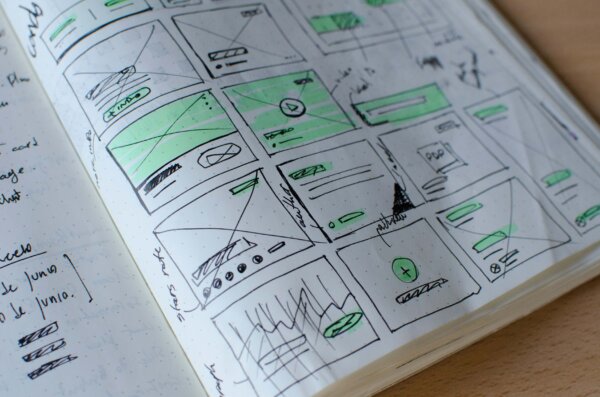
Ecommerce Personalization: Are You Really Doing It Right?
Good ecommerce personalization starts with understanding exactly what it is and isn’t, and how it is employed most effectively.
How many ecommerce personalization examples can you think of?
At The Good, when we ask prospective clients that question, most respond with “Using the customer’s name in email messages.”
Some even tell us they’ve been paying someone for personalization services, but all they’re really getting is a glorified email merge.
We both know there’s more to ecommerce website personalization, so let’s keep going.
Here are a few examples to get us started:
- Location identification personalization
- Previous customer identification and personalization
- Previous browsing record identification and personalization
Could information like that be valuable to an ecommerce website manager? How could the data be leveraged to help consumers convert better — by determining the type of content the visitor would most likely react favorably to?
If you’ve been hearing more and more buzz about ecommerce personalization, but you’re not sure about exactly how it works or where you should start, then this article is for you.
Let’s take a strategic look at ecommerce personalization, with the aim of separating that which is actually helpful from the hype that can waste your time.
In this article, we’ll help you get familiar with ecommerce personalization, go over the most common misconceptions about it, and list some of the most effective ways personalization tools and strategy are used in ecommerce today.
This brief study will help provide the clarity you need to make decisions about personalization strategy on your ecommerce site.

So, What is Ecommerce Personalization?
It may sound a bit mysterious, but ecommerce website personalization is nothing more (or less) than tailoring the online customer experience to each visitor specifically. In many ways, it’s the ultimate destination of testing and optimization efforts.
It can show up everywhere on your ecommerce site, including product pages, the product suggestions, or even the social proof recommendations shown to that specific person.
For instance, visitors identified as current customers could be greeted with a “Welcome back” sign, while those who’ve yet to buy from you could be served an incentive announcement like “Get 25% Off Today’s Purchase (for new customers only)” banner.
Personalization allows you to use the information you’ve already collected about your visitors to make their user experience (UX) more helpful, more focused, and more likely to convert.

Common Misconceptions about Ecommerce Personalization
When personalization technology first became widely noticeable online, there was great concern about whether or not it was too intrusive.
Email marketers began pulling from their database to insert “Hello [your first name]” as the greeting on personalized email. (For many companies, that’s still the limit of personalization.)
Travel companies picked up on the concept, and personalized ads (remarketing) began to appear. If you searched for the schedule and pricing for a trip to Paris, for example, you might then notice “Visit Paris” ads popping up everywhere else you traveled online.
That led to the first misconception:
Misconception #1: Personalization is downright ‘spooky.’ At first, it seemed that way – especially when Forbes printed a story about Target determining that a teenager was pregnant… before she’d told her parents. Maternity clothing mailers were addressed to the girl, said Forbes, and that created a bit of drama before the truth came out: she was due in August.
That was in 2012. Personalization, as a marketing practice, has now become so widespread that online shoppers expect it. They sometimes even rely on those retargeting ads to remind them they need to make a purchase soon.
Let’s look at a few more of the most popular objections about personalization we hear at The Good. They frequently come up when we suggest using website personalization tools as part of a conversion optimization strategy.
Misconception #2: Personalization only works if you have a ton of content on your website. It’s true that you’ll need content suited to your personalization plan, but that doesn’t mean you have to work overtime creating more content. Let’s say you sell shoes, and your ecommerce personalization tools are setup to identify your visitors by their previous browsing and shopping behavior.
Personalization can be as simple as showing specials on work boots to the customer who’s been looking for a new pair of steel toes and specials on sandals to the customer who’s been browsing beachwear. You already have those product pages. Personalization allows you to deploy them strategically.
Misconception #3: Personalization is a fad. Given the depth and rate of change we’ve become accustomed to in the world of digital marketing, it’s tempting to think everything will soon be replaced by something else – that every new marketing tactic is just a flavor of the week, therefore not worth wasting the time and capital required to get on board.
That idea does, indeed, make sense. But it’s not always true. Not when applied to the foundational principles of marketing. Those don’t change.
Styles change. Color preferences change. Smartphones change. But the principle that the more you know about your audience and the better you serve them, the more you’ll sell. That was true long before the internet came along, and it’s still true today.
Personalization increases your ability to know what your customers want and gives you a way to serve it up quickly. It’s not a fad. It’s a powerhouse capability every ecommerce manager should investigate closely.
Misconception #4: Personalization is a hard-sell tactic that pushes people away. Think about it. You walk into your favorite coffee shop, and the barista says, “Hey, Joe, good to see you,” as he slides your favorite vanilla latte’ over the counter. You’re not put off. Rather, you’re pleased with the recognition. You’re comfortable and glad to be there.
The same thing applies at the barbershop or hair salon, the grocery store, and every other business in town. You like being known. You like being given special, personalized service. And the better you feel about the business, the more money you’ll spend there.
Smart ecommerce managers see personalization as a way to provide their customers with an easier to navigate, more welcoming user experience. When you work hard to show visitors you are paying attention to their needs, they’ll reward you with sales.
You’re not “pushing the sale,” though, you’re letting people know you want them in your ecommerce store, and you’re doing what you can to make their visit special.
Misconception #5: Personalization is the same as customization. These terms are similar, but there’s one huge difference. Personalization consists of the tools and process you use to anticipate your visitors’ needs and provide them a unique user experience. Customization refers to the steps your visitors can take to tweak their own user experience.
Showing product suggestions based on the interests the visitor has demonstrated by clicking on certain links is an example of personalization. Giving the visitor the ability to sort a search return by either lowest price or highest reviews is an example of customization (which includes filtering).
Both are recommended ways to improve user experience, but they aren’t the same thing.
The objections just listed are the most popular, but there are plenty more. Most arise from confusion about what personalization is and how it works.
There’s one thing we’ve never heard, though: a sound reason for not implementing a personalization strategy.

Ecommerce Website Personalization Examples
Here are some of the ways we’ve seen personalization effectively used on ecommerce websites. The tactics you choose will necessarily be directly related to the products or services you sell and your own conversion optimization capabilities.
- Geographic personalization: You may want to serve up different offers to your visitors, depending on their location. When it’s summertime in New York, it’s rainy season in Sydney. Depending on the products or services you offer, that may mean you’ll want to show those visitors pages tailored to their particular environment.
- Referrer source: Your analytics data may indicate that visitors originating from Facebook are typically interested in an offer that visitors from LinkedIn aren’t so excited about. Referrer source personalization allows you to tweak the user experience, thereby helping optimize your conversion rate. This is even more powerful when combined with targeted AdWords campaigns.
- Prior visit history: The more information you have about a visitor’s prior actions, the better able you are to predict interests and serve pages aimed at serving those interests. Is someone back for the third day in a row to view your snowshoe collection? That’s valuable insight. Your personalization software may be able to make an insightful suggestion about a new model or deliver a special offer that will help the visitor make a decision to purchase this time.
- Past purchase data: Once the customer is established, there are numerous ways you can predict current needs and influence desire. In the Target example we cited, the customer’s purchase history enabled the company’s personalization software to make statistical connections that rightly predicted the pregnancy. To take the concept further, new parents who are buying diapers and baby food today are going to be in the market for toddler clothing and security gates in the foreseeable (and predictable) future.
- Wisdom of the crowd data: This is a step up in creative thinking, and it can be incredibly effective. You can use aggregate data from consumers with similar interests to make predictions about the items they’ll be wanting to buy next. Are your computer equipment early adopters buying and leaving excellent reviews for a new backup device? You can show that product to others with similar interests and help fan the excitement. No, that’s not too “salesy.” It’s smart marketing, and it provides a real service to your customers.
- Also-bought data: This is akin to the checkout clerk’s cross-selling suggestions. Someone buying paint may need an extra paint brush or two. A hiker getting a new pair of boots will likely want to apply leather conditioner and a good water repellent boot grease before going on the maiden voyage. Also-bought data prompts online reminders to help shoppers make sure they order everything needed for a pleasant buying experience.
This is by no means been an exhaustive list. Its purpose is to help you realize the manifold possibilities offered by ecommerce website personalization.
Personalization Starts with Conversion Optimization
If you’ve been dragging your feet about getting on board and going beyond your email salutations to a more robust personalization program—it’s not too late.
As you consider deploying more personalization on your ecommerce website, keep in mind that it all begins with testing and conversion optimization. As we tell a number of our clients, conversion optimization is the foundation that begins to tailor your website while personalization is the natural destination.
For deeper insight, ask The Good about a complimentary review of your ecommerce site and advice on how testing and optimization can help jumpstart your personalization goals, turning more of your existing site traffic into paying customers.
Resources:
- Creating a Personalized Customer Experience
- Score Your Site – Find Out How to Boost Conversions
- Privacy Concern, Trust, and Desire for Content Personalization

About the Author
David Hoos
David Hoos is the former Director of Marketing at The Good and a trusted advisor to marketing experts.
